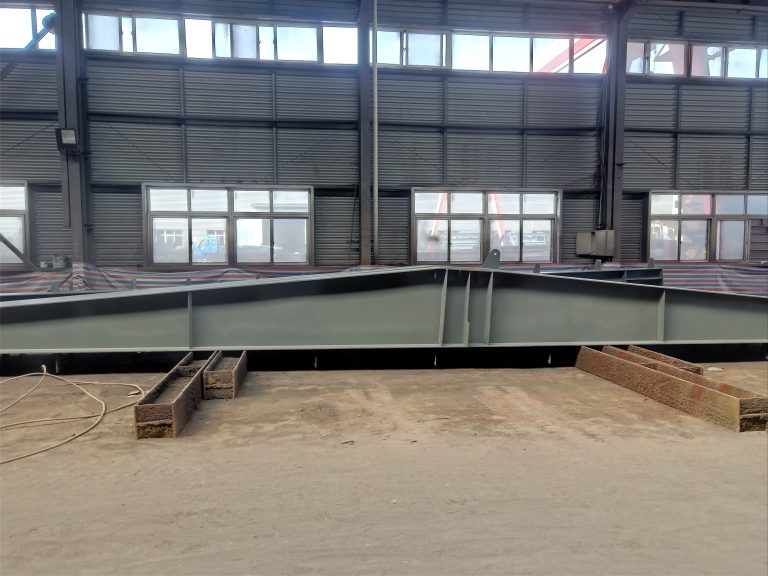Inhoudsopgave
Advantages of Using Steel Structures in Industrial Buildings
Steel structures have become increasingly popular in the construction industry, particularly in the realm of industrial buildings. The use of steel offers numerous advantages over traditional building materials such as wood or concrete. In this article, we will explore the application and case of steel structures in building industrialization.
One of the key advantages of using steel structures in industrial buildings is their strength and durability. Steel is a highly durable material that can withstand extreme weather conditions and natural disasters such as earthquakes and hurricanes. This makes it an ideal choice for industrial buildings that need to be able to withstand heavy loads and harsh environments.
In addition to their strength, steel structures are also incredibly versatile. Steel can be easily molded and shaped into a wide variety of designs, allowing for greater flexibility in the design and construction of industrial buildings. This versatility also makes steel structures easier to customize and modify, allowing for easy expansion or renovation of industrial facilities.
Another advantage of using steel structures in industrial buildings is their cost-effectiveness. While the initial cost of steel may be higher than other building materials, the long-term savings can be significant. Steel structures require less maintenance and repair than traditional building materials, saving money on upkeep and repairs over the life of the building.
Steel structures are also more environmentally friendly than traditional building materials. Steel is a recyclable material, meaning that it can be reused and repurposed at the end of its life cycle. This reduces the amount of waste that ends up in landfills and helps to conserve natural resources.

One notable case of the successful application of steel structures in building industrialization is the construction of the Empire State Building in New York City. When it was completed in 1931, the Empire State Building was the tallest building in the world and was constructed using a steel frame. The use of steel allowed for the building to be constructed quickly and efficiently, with the entire project taking just over a year to complete.
The Empire State Building’s steel structure also allowed for the building to be incredibly strong and durable, able to withstand the high winds and heavy snow loads that are common in New York City. This strength and durability have allowed the Empire State Building to stand for nearly 90 years, becoming an iconic symbol of American architecture.
In conclusion, the application of steel structures in building industrialization offers numerous advantages over traditional building materials. Steel structures are strong, durable, versatile, cost-effective, and environmentally friendly, making them an ideal choice for industrial buildings. The successful case of the Empire State Building demonstrates the effectiveness of steel structures in creating iconic and long-lasting structures. As the construction industry continues to evolve, steel structures will likely play an increasingly important role in building industrialization.
Case Studies of Successful Application of Steel Structures in Industrialized Building Projects
Steel structures have become increasingly popular in the construction industry due to their numerous advantages, such as strength, durability, and cost-effectiveness. In the realm of industrialized building projects, steel structures have been widely utilized to create efficient and sustainable buildings. This article will explore the application and case studies of successful implementation of steel structures in industrialized building projects.
One notable case study of the successful application of steel structures in industrialized building projects is the construction of the Empire State Building in New York City. Completed in 1931, the Empire State Building was the tallest building in the world at the time of its completion. The building’s steel frame allowed for rapid construction, with the entire structure being erected in just over a year. The use of steel also provided the necessary strength to support the building’s immense height and weight, making it a durable and long-lasting structure.
Another example of the successful application of steel structures in industrialized building projects is the construction of the Burj Khalifa in Dubai. Completed in 2010, the Burj Khalifa is currently the tallest building in the world. The building’s steel frame allowed for the construction of a tall and slender structure, maximizing the use of available space in the densely populated city. The use of steel also provided the necessary strength to support the building’s immense height and weight, making it a safe and secure structure for its occupants.
In addition to these iconic examples, steel structures have been widely used in industrialized building projects around the world. From warehouses and factories to office buildings and residential complexes, steel structures offer a versatile and efficient solution for modern construction needs. The use of steel allows for faster construction times, reduced labor costs, and increased flexibility in design, making it an ideal choice for industrialized building projects.
One key advantage of steel structures in industrialized building projects is their sustainability. Steel is a highly recyclable material, with a significant portion of steel used in construction projects being made from recycled materials. This not only reduces the environmental impact of construction projects but also helps to conserve natural resources. Additionally, steel structures are highly durable and require minimal maintenance, reducing the long-term environmental impact of buildings.
In conclusion, the application of steel structures in industrialized building projects has proven to be a successful and sustainable solution for modern construction needs. From iconic skyscrapers to everyday buildings, steel structures offer a versatile and efficient option for a wide range of projects. The use of steel allows for rapid construction, cost-effectiveness, and sustainability, making it an ideal choice for industrialized building projects. As the construction industry continues to evolve, steel structures will likely play an increasingly important role in shaping the buildings of the future.





